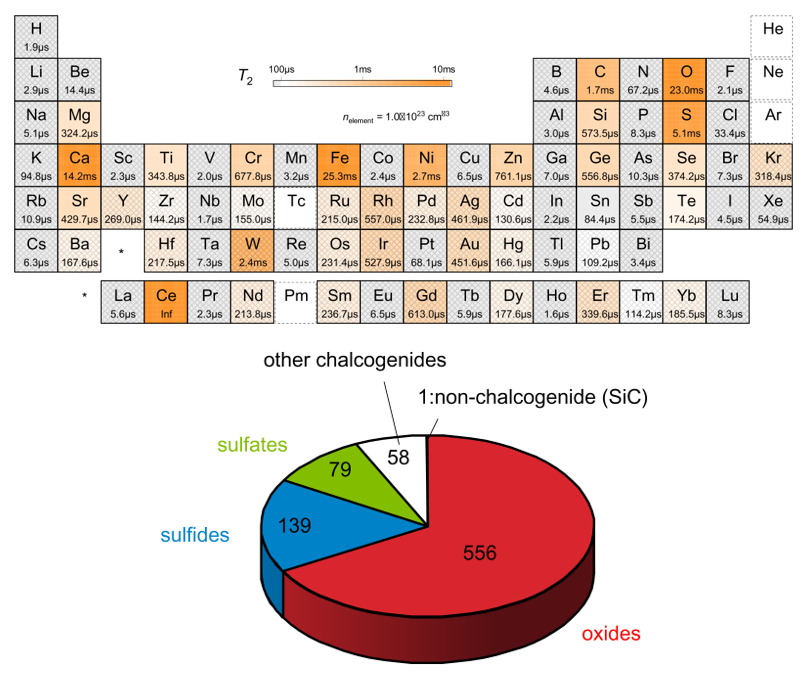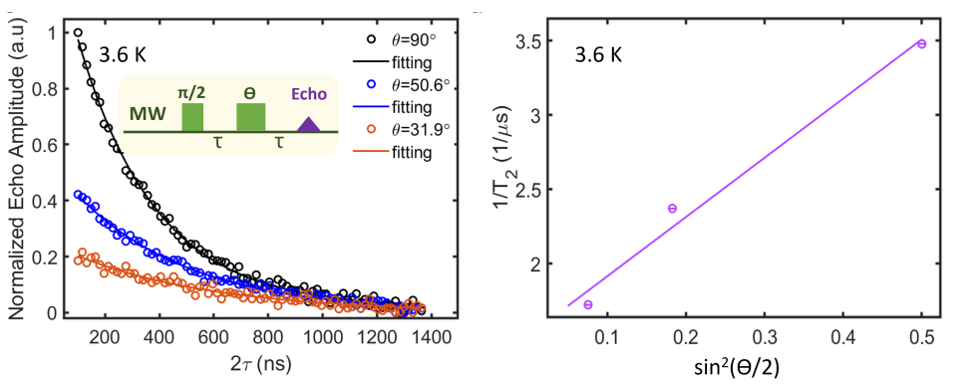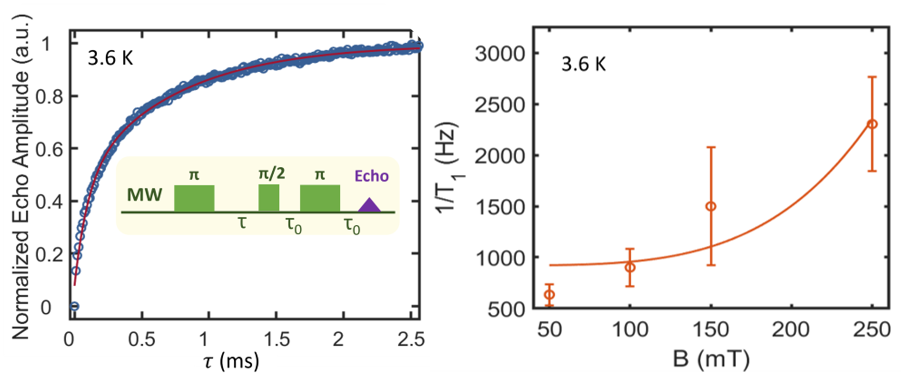For most quantum applications, the key property of interest is the electron spin coherence time, generally defined as T2 by Hahn echo measurement. Through use of cluster correlation expansion (CCE) approximations, we have derived the electron spin coherence's generalized scaling law, which describes the arbitrary materials' electron spin coherence time with one algebraic expression and have predicted nearly developed 800 materials with coherence time longer than 1 ms in naturally abundant material (i.e., without isotopic purification).

This result points to oxides as a promising group for new qubit materials, offering a unique opportunity as a host for solid-state quantum systems with excellent predicted coherence properties similar if not superior to diamond and SiC. Out of all the oxides, CeO2 is of particular interest with the predicted spin coherence time up to 47 ms due to the intrinsically low nuclear spin (0% for Cerium and 0.04% for Oxygen).
We explore rare-earth ion defects, in particular erbium ions, in CeO2 host, as a new qubit platform. Trivalent erbium ions (Er3+) has an 4I15/2 to 4I13/2 transition in the telecom C-band providing a spin-photon interface. CeO2, as discussed before, offers a promising, low-nuclear-spin environment, which helps in supporting long lived spin with extended coherence times. This work helps us to fundamentally understand and improve spin and optical coherence properties needed for implementations of future quantum memory and repeaters.
The Er3+ doped CeO2 film is grown on Si (111) substrate via molelcuar beam epitaxy. The syntehiszed films are characterize to examin first the Er3+ ions’ optical cohernece of the Y1-Z1 manisfold of the 4I15/2 to 4I13/2 transition. To characterize optical coherence time, we perform two-pulse photon echo measurements. The envolop decay of the photon echo indicates a optical coherence time T2 of 720 ns which inidcates a homogeneous linewidth of 440 KHz. The optical dephasing at the exained temperature of 3.6 K is limited by Orbach phonon process. The obtained homogeneous linewidth suggests that a viable path exists for integrating Er ions in a cavity with a suitable quality factor to coherently control Er emisison, all in an integrated silicon-compatible opto-electrical device.

Besides optical coherence, we continue to examin spin coherence using electron paramagenitc resonance technique. Two-pulse Hahn echo sequence is used to probe spin coherence time T2 at 3.6 K. We find a T2 of 249 ns. The low nuclear spin noise enables access to the electron spin coherence dynamics at such elevated temperature, which is not observable in other well studied host materials including YSO, YVO4, CaWO4. Using a generalized Hahn echo sequence (π/2−τ −θ) sequence, we identify that one limiting dephaisng process is spin exictaiton induced instantaneous diffusion, suggesting a T2 of 0.66 μs at single Er ion limit.

The spin relaxation time, T1, is 0.83 ms studied using population inversion pulse sequence. Through tuning the spin flip-flop process using various magnetic field, we could extend the spin T1 to ~2.5 ms at 3.6 K. This points to the potential of having Er3+ electron states with coherence up to ms scale.

Details can be found in our manuscripts: